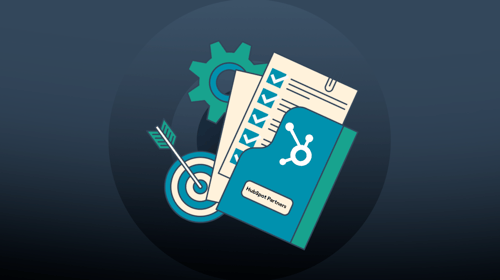In this article, I’m going to walk through why data unification alone doesn’t solve everything, and what’s really missing when it comes to making your data AI-ready.
When it comes to digital transformation and AI, one thing is clear: unifying data is often the first critical step. It’s not the whole solution, but without it, progress stalls. Companies aren’t claiming unified data alone will solve everything, but they know it lays the groundwork for effective AI and smarter decision-making.
According to the AI Data Readiness Report, 55% of companies say they’ve successfully unified more than half of their data into a centralized system.
Despite this apparent success in centralizing data, 47% of those companies still report struggling with poor-quality data—the kind of incomplete, inconsistent, and duplicated records that make it nearly impossible to fully utilize the power of AI.
I’ve seen this firsthand. The trap that many businesses fall into is assuming that once they've been able to centralize their data - their data will be “AI-ready.” But let’s be clear: data unification isn’t a magic bullet. In fact, it often just creates a new set of challenges—what I like to call “centralized chaos.”
Now, I know what you’re thinking: "We’ve unified our data. Shouldn’t AI tools be working their magic by now?" It’s easy to think that way, but the reality is that bringing all your data together is only the first step. Without structure, governance, and quality, you might be setting yourself up for failure, not success.
Why innovation fails without clean data
Every company wants to innovate—to move faster, serve customers better, and stay ahead of the curve. But innovation can’t happen without a solid data foundation.
Many digital transformation efforts focus on consolidating tools and reducing tech bloat. That’s important, but it’s only part of the picture. If the data feeding those tools is messy, outdated, or siloed, innovation stalls before it starts.
Clean, reliable data is what turns systems into solutions. It enables better decisions, smoother collaboration, and smarter automation. Without it, even the best tech stack can lead to confusion, inefficiency, and missed opportunities.
Data isn’t just part of digital transformation—it’s the foundation.
Why your unified data still feels broken
Picture this: your team spends weeks—or even months—pulling data from different systems like your CRM, marketing tools, sales reports, and customer service logs into one place. The idea is that once everything’s in a single system, your business will run more smoothly.
But once the setup is done, the complaints continue to roll in. The marketing team can’t segment their audience properly because the data doesn’t match up. Sales reps are frustrated because they’re seeing duplicate customer records. Executives don’t trust the reports because the numbers are inconsistent.
This is what happens when unorganized, low-quality data is simply merged together without fixing the core problems first. It creates what we call centralized chaos. Instead of solving issues, it creates a bigger mess that’s harder to sort out.
Here are some of the key issues that arise from unaddressed data problems.
- Duplicate records: You’ve now got multiple versions of the same customer scattered across different systems. In some cases, it’s easy to miss these duplicates when you’re unifying data. But when they show up in your reports, suddenly your marketing team is over-communicating with customers who think they’re hearing from two different brands. Or worse, they might receive conflicting messages about product recommendations or promotions.
- Inconsistent data formats: Maybe your CRM uses one format for phone numbers, your sales system uses another, and your customer service tool has yet another. Without standardization, your AI tools can’t analyze data properly. What’s worse, they may give you incorrect or incomplete insights because they can’t make sense of the discrepancies.
- Incomplete datasets: You might have gaps in your data that no one notices until it’s too late. Maybe some customer profiles are missing key information, or your sales data doesn’t include recent transactions. AI models depend on complete data to generate accurate predictions, so when it’s incomplete, your results will be skewed.
When you unify data without addressing these foundational issues, you’re left with a system that looks organized on the surface but is a ticking time bomb for your decision-making and AI projects.
How to tell if your centralized data is actually AI-ready
So, you’ve centralized your data. But is it really ready for AI?
Here’s a quick test you can run before jumping into AI tools:
- Can your teams consistently find what they need?
If people are spending more time reconciling reports than acting on them, that’s a red flag. - Do your reports always line up across systems?
Misaligned metrics are often a sign that data isn't properly standardized or governed. - Is the data complete and trustworthy?
Missing customer info, inconsistent formats, or outdated records? AI can’t fill those gaps—it’ll just learn from them. - Are teams creating workarounds?
If users are exporting data to Excel just to “clean it up,” your systems aren’t AI-ready.
These kinds of friction points show that centralization alone isn’t enough. AI needs structured, governed, high-quality data to function properly.
How AI tools can exacerbate data issues
I’ve seen it time and time again. Businesses get excited about AI’s potential to drive growth, automate processes, and generate insights. But when those AI tools are plugged into poor-quality data, they end up magnifying the very issues that were already there.
Instead of creating value, they push the flaws in the data into the spotlight—often with disastrous consequences.
Imagine you’ve got a dataset that’s full of duplicates, incomplete records, and inconsistent formats. You feed that data into your AI system, thinking it’ll help automate customer segmentation.
But instead, the AI starts grouping customers incorrectly or making recommendations based on flawed data. What you thought would be a time-saving, decision-driving tool actually starts delivering garbage insights.
Let’s say your sales team is relying on AI to forecast revenue. If the data feeding those predictions is incomplete or inaccurate, the results can be disastrous. You could end up with an overly optimistic forecast that misses the mark—or an underestimation that leaves you scrambling to meet unexpected demand.
And it’s not just sales. In marketing, dirty data can mean duplicate records, inconsistent customer profiles, and poorly targeted campaigns. One customer might get two conflicting offers, while another is completely overlooked.
Addressing these foundational data issues before implementing AI is essential—otherwise, AI will just magnify the cracks in your data foundation.
AI accelerates processes, but if you haven’t addressed the underlying data issues, it speeds up the problems too. Rather than fixing the core issues with your data, AI ends up being a magnifying glass that focuses on the cracks in your foundation.
How to prepare your data for real AI impact
So, what’s the solution? How do you ensure that your data is not just centralized, but truly AI-ready? The missing elements are simple in concept but require ongoing effort to implement: data governance, quality control, and standardization.
Here’s the thing: AI will only work if your data works. And to make your data work, you need a solid foundation. Let’s break it down:
- Data governance and quality control: This is where it all starts. Without a strong framework for data governance, your data can quickly become a chaotic mess again. Data governance means establishing clear rules for how data is collected, stored, and used. It involves maintaining data accuracy, consistency, and security. You need to ensure that the data being fed into your AI models is not only clean but also trustworthy. This means regular checks, audits, and updates to keep everything in top shape.
- Regular data cleansing and deduplication: If there’s one thing that’s non-negotiable, it’s clean data. Regular cleansing of data to eliminate duplicates, correct inconsistencies, and fill in missing values is critical. Imagine trying to build a strategy based on customer profiles that are half-complete or full of errors. It’s almost impossible. Data cleansing is the only way to ensure that your AI systems are operating on data that is accurate, consistent, and comprehensive.
- Standardized data formats: As I mentioned earlier, having standardized formats is essential. Whether it’s dates, phone numbers, or customer IDs, every system should be using the same language. If different departments have their own way of structuring data, it becomes impossible to create reliable AI models. Standardizing data across platforms isn’t just a nice-to-have; it’s a prerequisite for AI success.
Implementing these practices requires a mindset shift. It’s not about just centralizing data—it’s about taking responsibility for the quality of that data and ensuring it’s structured in a way that empowers your AI tools to generate valuable, actionable insights.
Ready for AI? Make sure your data is too
Centralizing your data is a good first step—but it’s not enough.
Just putting everything in one place doesn’t fix deeper problems like poor data quality, lack of structure, or missing governance. And if those issues aren’t addressed, AI will only make them worse.
If you’re serious about using AI, you need to take a closer look at your data. Duplicates, incomplete records, and inconsistent formats can all hold you back. The real value comes when your data is clean, organized, and properly managed.
Here’s the bottom line: AI can be a powerful tool, but only if the data behind it is solid. Otherwise, you’re just speeding up bad decisions.
Avoid the unification trap. Clean up your data first—then use AI to do more with it.
Need help getting your data AI-ready? Our team can help you clean, organize, and set up the right processes to get the most out of your AI tools.










-3.png?width=500&height=320&name=Matt%20-%20imagery%20bank%20(8)-3.png)

